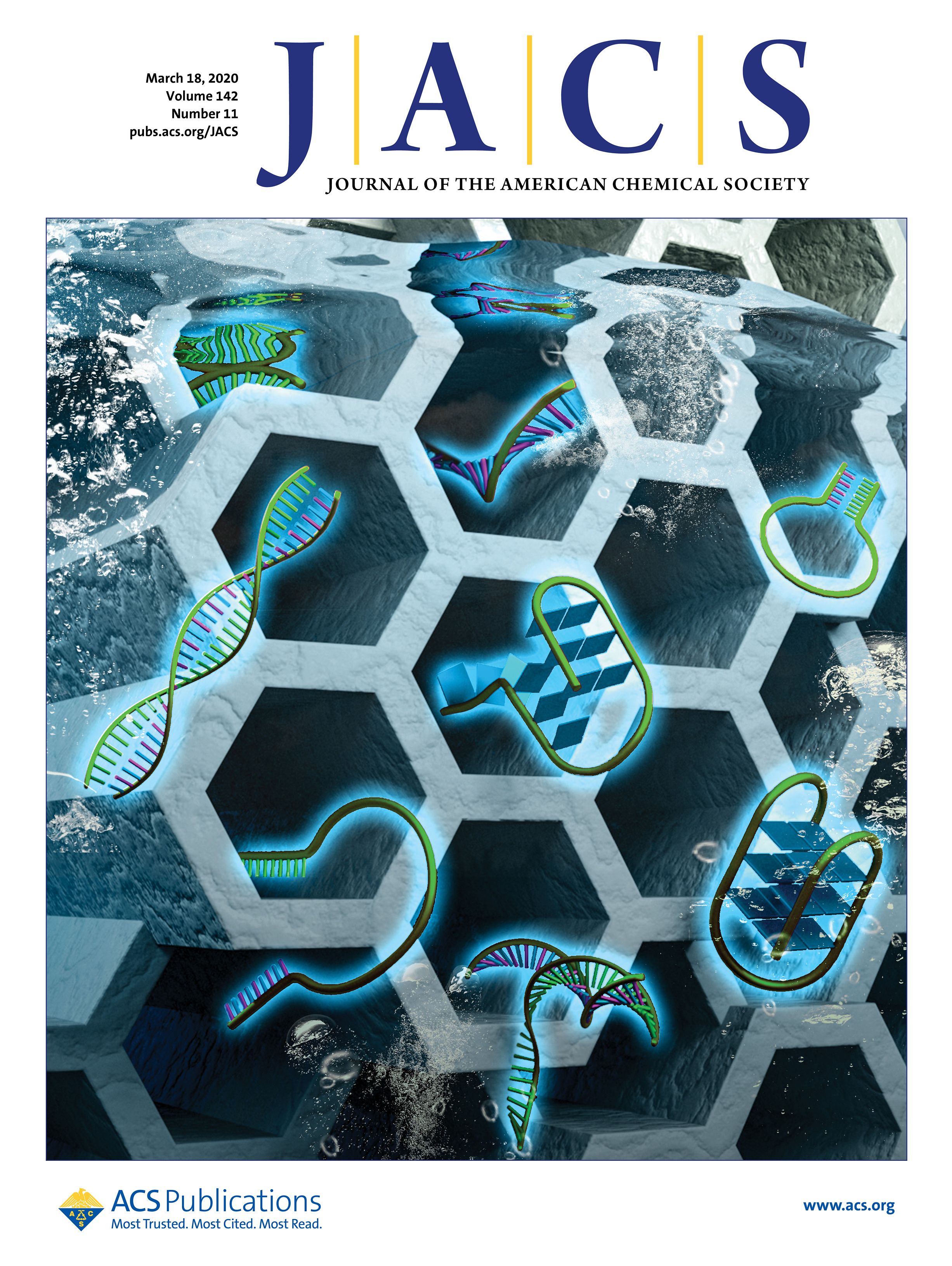
Title: Efficient Separation of Nucleic Acids with Different Secondary Structures by Metal–Organic Frameworks
Abstract: We report the use of metal–organic frameworks (MOFs) for the selective separation of nucleic acids (DNA and RNA) with different secondary structures through size, shape, length, and capability of conformational transition. Three MOFs with precisely controlled pore environments, Co-IRMOF-74-II, -III, and -IV, composed of Co2+ and organic linkers (II, III, and IV), respectively, were used for the inclusion of nucleic acid into their pores from the solution. This was proven to be a spontaneous process from disordered free state to restricted ordered state via circular dichroism (CD) spectroscopy. Three critical factors were identified for their inclusion: (1) size selection induced by steric hindrance, (2) conformation transition energy selection induced by stability, and (3) molecular weight selection. These selection rules were used to extract nucleic acids with flexible and unstable secondary structures from complex mixtures of multiple nucleic acids, leaving those with rigid and stable secondary structures in the mother liquor. This provides the possibility to separate and enrich nucleic acids in bulk through their different structure feature, which is highly desirable in genome-wide structural measurement of nucleic acids. Unlike methods that rely on specific binding antibodies or ligand, this MOF method is capable of selecting all kinds of nucleic acids with similar secondary structure features; therefore, it is suitable for the handling of a large variety and quantity of nucleic acids at the same time. This method also has the potential to gather information about the folding stability of biomolecules with secondary structures.